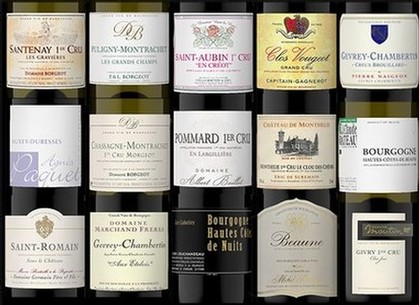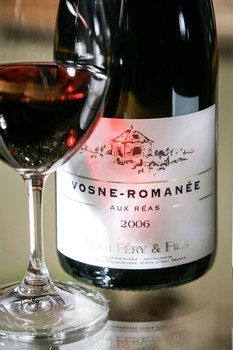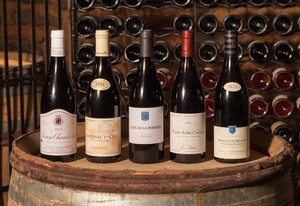
Wine affects us on many levels, often very subtly. It makes us feel things both in terms of what we see when we buy it, and what we experience when drinking it. But it isn’t just the wine itself that speaks to our emotions; the label—probably the first thing we notice on a bottle—taps into our subconscious too, as well as the other visual stimuli like color, cork/screw-top, marketing, price, etc. Subconsciously, labels make us think about the wine a certain way.
 For example, when presented with several wine bottles, more than a third of drinkers in one study said (incorrectly) that the bottle with an image of a chateau on the label was the priciest, with only 15% guessing correctly as to which was highest priced. The power of association is strong. Label design matters too; simple, elegant designs make us think high-end vintage and sophistication, the idea being that they don’t need to rely on fancy branding to win us over—the name does it straight away. A well-chosen typeface can give the impression of age, or innovation, or simplicity. The use of foil helps too, either on the label or the closure, and the color of it indicates what we are likely to expect from the wine (yellow suggests buttery richness, whilst green puts us in mind of fruity or tropical flavors).
For example, when presented with several wine bottles, more than a third of drinkers in one study said (incorrectly) that the bottle with an image of a chateau on the label was the priciest, with only 15% guessing correctly as to which was highest priced. The power of association is strong. Label design matters too; simple, elegant designs make us think high-end vintage and sophistication, the idea being that they don’t need to rely on fancy branding to win us over—the name does it straight away. A well-chosen typeface can give the impression of age, or innovation, or simplicity. The use of foil helps too, either on the label or the closure, and the color of it indicates what we are likely to expect from the wine (yellow suggests buttery richness, whilst green puts us in mind of fruity or tropical flavors).
But aside from good marketing, labels tell us everything of importance that we need to know about what’s inside. Here’s a brief summary of the information you’ll likely see on a Burgundy wine bottle, and what to make of it all.
To begin with, let’s look at what you probably won’t see on a Burgundy wine bottle. On many bottles from Burgundy, you won’t see the grape variety. You probably know already that in Burgundy, red is Pinot Noir (unless it’s Beaujolais which is made from Gamay), and white is Chardonnay (unless it’s from Bouzeron, where they use Aligoté). However, on some regional wine bottles the grape variety will be shown.
Next, you will see the words ‘Appellation [location] Controlee’, such as ‘Appellation Savigny-les-Beaune Controlee’. This system, abbreviated to AOC, is designed to guarantee the origin of the wine and keep things regulated and above-board. It’s tricky in Burgundy though; there are so many winemaking villages and each has their own vineyards which are recognised and classified in the AOC statutes. The way to understand them all is to understand the four categories these AOCs are grouped in:
- Think of a pyramid with four levels. At the very top of the pyramid are the best wines you can get – the Grand Cru AOC wines. They come from vineyards of historical importance, well known even before the AOC system and they stand on their name alone. Only the top 2% of Burgundy wines are in this class.
- Down a level and you find Premier Cru AOC wines (often written as 1er Cru). They are named after the village they are found in, followed by the specific name of the vineyard they came from. These wines make up about 10% of total Burgundy production.
- Below these are the Village AOCs. These are Burgundy wines made entirely from grapes from a specific village. They make up just over a third of all wine produced here.
- At the bottom are regional AOCs (roughly half of all wine in Burgundy). Wines in this class are called ‘Bourgogne rouge’ or ‘blanc’. This is generic Burgundy wine, and it is possible to blend wines from different parts of Burgundy to make AOC Bourgogne.
 One thing to remember, though, is that in the last century many Burgundy villages decided that a great way to sell their village AOC wines would be to legally change the name of their town by adding the name of their most famous vineyard. So, for instance, the village of Gevrey, hoping to profit from the fame of the Grand Cru Chambertin, changed its name to Gevrey-Chambertin. But village AOC Gevrey-Chambertin is not the same thing at all as Grand Cru Chambertin. Caveat emptor!
One thing to remember, though, is that in the last century many Burgundy villages decided that a great way to sell their village AOC wines would be to legally change the name of their town by adding the name of their most famous vineyard. So, for instance, the village of Gevrey, hoping to profit from the fame of the Grand Cru Chambertin, changed its name to Gevrey-Chambertin. But village AOC Gevrey-Chambertin is not the same thing at all as Grand Cru Chambertin. Caveat emptor!
Other things to notice on the label include the crucial fact of who made it – was it an independent producer, or a negociant? (in Burgundy, that’s a merchant who blends and then sells wines from a variety of vineyards, some of which they own and some they do not).
The best way to buy great Burgundy wine is to get to know the names of the best producers —especially the smaller, lesser known ones that still give great value for money. These producers, many of whom Elden Selections works with, have a variety of interesting and informative labels. Why not check some of them out in our wine shop?
Ultimately its what’s inside the bottle that we remember, and where we were (and who we were with) when we drank it. You could drink the best Burgundy wine from any old unlabelled bottle but the quality of the wine inside would still shine through. Labels do, however, add to the pleasure of the hobby, and can tell us the vital info we need to know as dedicated wine enthusiasts.
 There are lots more fascinating articles and How-To guides on our blog—including on the subject of how to find the best Burgundy wines for under $35 each, and a beginner’s guide to the Chablis wine region. And don’t forget our great Burgundy Wine Club is open for membership now!
There are lots more fascinating articles and How-To guides on our blog—including on the subject of how to find the best Burgundy wines for under $35 each, and a beginner’s guide to the Chablis wine region. And don’t forget our great Burgundy Wine Club is open for membership now!
